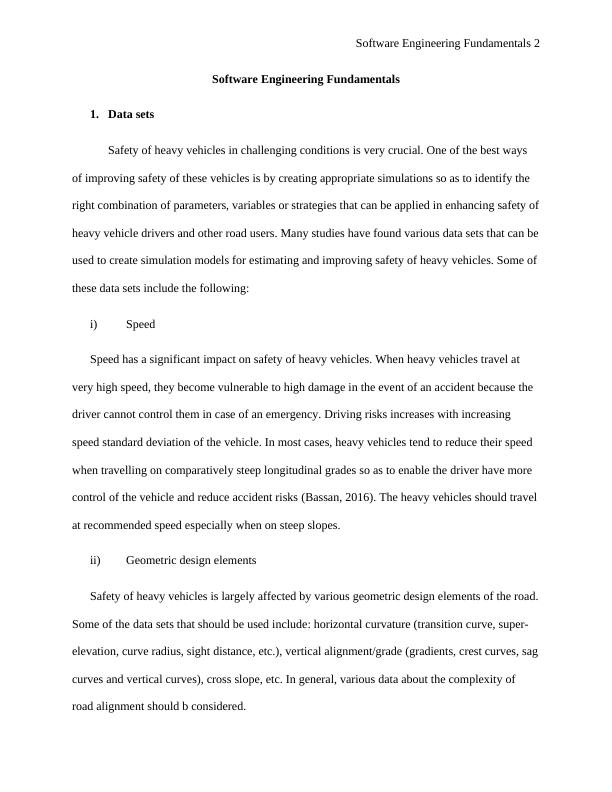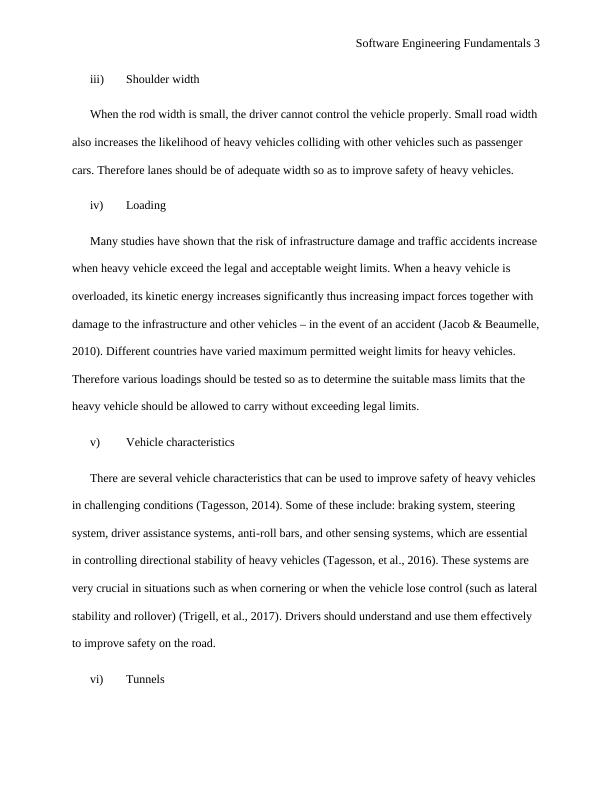Data Sets and Friction Estimation for Safety of Heavy Vehicles
Presented at the International Symposium on Heavy Vehicle Transport Technology (HVTT14) Rotorua, New Zealand 2016
8 Pages1986 Words330 Views
Added on 2023-06-10
About This Document
This article discusses the importance of data sets and friction estimation in improving safety of heavy vehicles in challenging conditions. It covers various data sets such as speed, geometric design elements, loading, vehicle characteristics, road conditions, road signs and control systems, and safety management interventions. It also explores different ideas of enhancing friction estimation safety, including the use of measured values from sensors, system models, environment and road sensing, cooperative methods, vehicle dynamics observation techniques, and machine learning.
Data Sets and Friction Estimation for Safety of Heavy Vehicles
Presented at the International Symposium on Heavy Vehicle Transport Technology (HVTT14) Rotorua, New Zealand 2016
Added on 2023-06-10
ShareRelated Documents
End of preview
Want to access all the pages? Upload your documents or become a member.
Marshall Method of Mix Design | Geometric Design - Desklib
|21
|2635
|148
IOT Early Pedestrian Detection for Driving - Project Requirements Analysis and Specification
|42
|10263
|461
Finite Element Analysis of Truck Axle
|34
|7888
|37
Self-Driving Cars - Assignment
|9
|1233
|176



